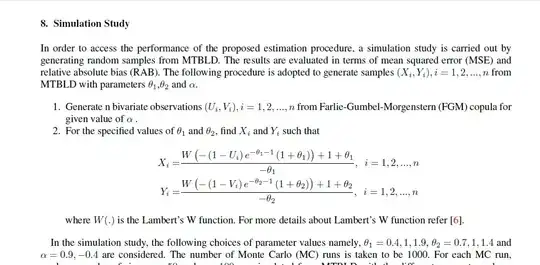I studied a research paper they are using the lambert function to generate random number x and y from a Farlie-Gumbel-Morgenstern (FGM) copula function in the simulation study, I tried to understand how the author used the Lambert function so I can write a program in R software but I didn't get too much.
I am wondering if we can use the Lambert function for any copula function in the simulation study.
(paper link https://s3arch.page/results.php?q=Morgenstern%20type%20bivariate%20Lindley%20distribution%20V.S.%20Vaidyanathan%E2%88%97,%20Sharon%20Varghese.%20A

I am so grateful for any assistance thanks.